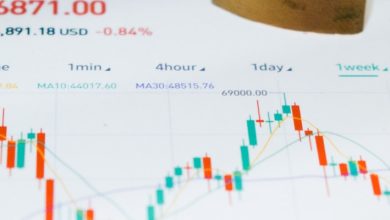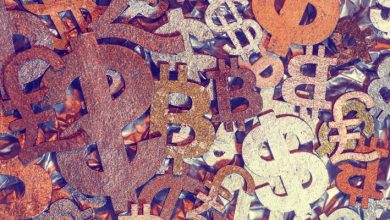How to Use Technical Analysis for Crypto Market Insights

- Understanding the basics of technical analysis
- Identifying key indicators for analyzing crypto markets
- Using chart patterns to predict price movements
- Utilizing moving averages for trend analysis
- Applying support and resistance levels in your analysis
- Combining technical analysis with fundamental analysis for comprehensive insights
Understanding the basics of technical analysis
Technical analysis is a method used to evaluate investments and identify trading opportunities by analyzing statistical trends gathered from trading activity, such as price movement and volume. It involves studying historical trading data to forecast future price movements. Understanding the basics of technical analysis is essential for making informed decisions in the crypto market.
One of the key principles of technical analysis is the idea that historical price action tends to repeat itself. This means that past market behavior can provide clues about future market behavior. By identifying patterns and trends in price charts, traders can make educated guesses about where the price of a cryptocurrency may be headed next.
Support and resistance levels are crucial concepts in technical analysis. Support refers to a price level where a cryptocurrency tends to find buying interest, preventing the price from falling further. Resistance, on the other hand, is a price level where a cryptocurrency tends to encounter selling pressure, preventing the price from rising higher. By identifying these levels on a price chart, traders can make decisions about when to buy or sell a cryptocurrency.
Another important tool in technical analysis is indicators. Indicators are mathematical calculations based on a cryptocurrency’s price, volume, or open interest. They are used to confirm trends and predict future price movements. Common indicators include moving averages, relative strength index (RSI), and moving average convergence divergence (MACD).
Identifying key indicators for analyzing crypto markets
When analyzing crypto markets using technical analysis, it is crucial to identify key indicators that can provide valuable insights into market trends and potential price movements. These indicators help traders make informed decisions about when to buy or sell cryptocurrencies. Some of the key indicators to consider include:
– Moving Averages: Moving averages help smooth out price data to identify trends over time. Traders often look at the relationship between short-term and long-term moving averages to determine the direction of the market.
– Relative Strength Index (RSI): The RSI is a momentum oscillator that measures the speed and change of price movements. It can help traders identify overbought or oversold conditions in the market.
– Bollinger Bands: Bollinger Bands consist of a middle band (simple moving average) and two outer bands that represent standard deviations of the price. Traders use Bollinger Bands to identify volatility and potential trend reversals.
– Volume: Trading volume is an important indicator of market activity. High volume often accompanies strong price movements, indicating increased interest from traders.
– Fibonacci Retracement Levels: Fibonacci retracement levels are horizontal lines that indicate potential support and resistance levels based on the Fibonacci sequence. Traders use these levels to identify possible price reversals.
By analyzing these key indicators and understanding how they interact with each other, traders can gain valuable insights into market dynamics and make more informed trading decisions in the crypto markets.
Using chart patterns to predict price movements
One of the most popular methods of technical analysis used in predicting price movements in the crypto market is the use of chart patterns. These patterns can provide valuable insights into potential future price directions based on historical price data. By understanding and recognizing these patterns, traders can make more informed decisions on when to buy or sell their crypto assets.
There are several common chart patterns that traders often look for when analyzing price movements. Some of the most well-known patterns include head and shoulders, double tops and bottoms, triangles, flags, and pennants. Each of these patterns can indicate different potential outcomes for price movements, whether it be a trend reversal, continuation, or consolidation.
For example, a head and shoulders pattern typically signals a trend reversal, with the price likely to move in the opposite direction after the pattern is completed. On the other hand, a triangle pattern may suggest that the price is consolidating and preparing for a breakout in either direction. By recognizing these patterns and understanding their implications, traders can better anticipate market movements and adjust their trading strategies accordingly.
It is important to note that chart patterns are not foolproof indicators and should be used in conjunction with other technical analysis tools to confirm potential price movements. Additionally, it is crucial to consider other factors such as market sentiment, news events, and fundamental analysis when making trading decisions in the crypto market. By combining chart patterns with other analytical techniques, traders can gain a more comprehensive understanding of market dynamics and improve their overall trading performance.
Utilizing moving averages for trend analysis
One of the most popular tools for trend analysis in the crypto market is utilizing moving averages. Moving averages help traders identify the direction of a trend by smoothing out price fluctuations over a specified period of time. By looking at how different moving averages interact with each other and with the price action, traders can gain valuable insights into market trends.
There are different types of moving averages that traders can use, such as simple moving averages (SMA) and exponential moving averages (EMA). SMA gives equal weight to each data point in the calculation, while EMA gives more weight to recent data. Traders can experiment with different moving averages to see which ones work best for their trading strategy.
When using moving averages for trend analysis, traders typically look for crossovers between different moving averages as signals of a potential trend reversal. For example, a bullish crossover occurs when a shorter-term moving average crosses above a longer-term moving average, indicating a potential uptrend. Conversely, a bearish crossover occurs when a shorter-term moving average crosses below a longer-term moving average, signaling a potential downtrend.
It is important to note that moving averages are lagging indicators, meaning they are based on past price data. As such, they may not always accurately predict future price movements. Traders should use moving averages in conjunction with other technical analysis tools to confirm trends and make informed trading decisions.
Applying support and resistance levels in your analysis
One of the key aspects of technical analysis in the crypto market is the application of support and resistance levels to gain insights into potential price movements. Support levels are price points at which a particular cryptocurrency tends to find buying interest, preventing it from falling further. Resistance levels, on the other hand, are price points at which selling interest tends to be strong, preventing the price from rising higher.
By identifying these support and resistance levels, traders can make more informed decisions about when to enter or exit a trade. Here are some tips on how to effectively apply support and resistance levels in your analysis:
- Look for areas where the price has reversed direction multiple times in the past. These are likely to be strong support or resistance levels.
- Pay attention to round numbers and psychological levels, as these can also act as significant support and resistance levels.
- Use technical indicators such as moving averages, Bollinger Bands, or Fibonacci retracement levels to confirm the strength of a support or resistance level.
- Remember that support levels can become resistance levels once they are broken, and vice versa.
- Consider the volume of trading at a particular price level – higher volume at a support or resistance level can indicate its significance.
By incorporating support and resistance levels into your technical analysis, you can improve your ability to predict price movements in the crypto market and make more informed trading decisions.
Combining technical analysis with fundamental analysis for comprehensive insights
Combining technical analysis with fundamental analysis can provide a more comprehensive understanding of the crypto market. While technical analysis focuses on historical price movements and trends, fundamental analysis delves into the underlying factors that drive the market, such as the technology behind a cryptocurrency, the team behind it, and its potential real-world applications.
By integrating these two approaches, investors can gain a more well-rounded view of a cryptocurrency and make more informed decisions. For example, if technical analysis indicates a bullish trend for a particular crypto asset, but fundamental analysis reveals concerns about its security features or scalability, this may signal a potential risk that could affect its long-term performance.
Moreover, combining technical and fundamental analysis can help investors identify opportunities that may not be apparent when using either approach in isolation. For instance, a cryptocurrency that shows strong technical indicators but also has a solid foundation in terms of its technology and adoption may present a compelling investment opportunity.



